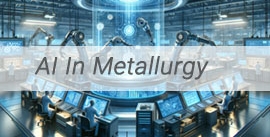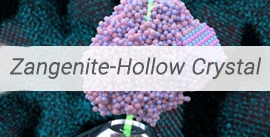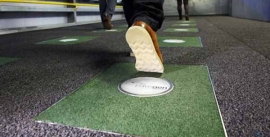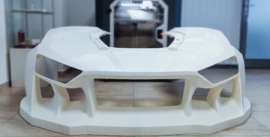 جدید
جدیدسیلیسیوم، مشکلات باتریهای نسل جدید را حل خواهد کرد! next-generation battery technology
سیلیسیوم
سیلیسیوم، مشکلات باتریهای نسل جدید را حل خواهد کرد!
Silicon solves problems for next-generation battery technology
سیلیسیوم که دومین عنصر فراوان در پوستهی زمین میباشد، طبق پژوهش اخیرا صورت گرفته، برای به کارگیری در باتریهای لیتیومی بسیار نویدبخش هستند. با جایگزینی سیلیسیوم به جای آنودهای گرافیتی، ظرفیت آنود چهار برابر میشود.
——————————————————–
ترجمه از گروه ترجمه ایران مواد
حرفه ای ترین تیم ترجمه مهندسی مواد کشور
———————————————————
در جوامع مختلف، منابع انرژیهای تجدیدپذیر و نشر آزاد، مانند باد و انرژی خورشیدی به طور فزایندهای در حال گسترش میباشد. تامین انرژی از این منابع نیز وابسته به شرایط آبوهوایی میباشد به این معنی که گاهی هوا آفتابی نبوده و یا وزش باد بسیار کم میشود و بایستی راهحلهای تکنولوژیکی برای تامین پیوستهی انرژی از این روشها ایجاد گردد. برای این منظور بایستی به دنبال روشهای ذخیرهی انرژی بود که باتریهای لیتیومی به نظر مناسب میرسند.
پژوهشگران دانشگاه فنلاد شرقی، تکنولوژی جدیدی را با جایگزینی آنودهای گرافیتی با سیلیسیوم، برای باتریهای لیتیومی معرفی کردهاند. در این مطالعه به بررسی الکتروشیمیایی سیلیسیوم متخلخل برای به کارگیری در باتریهای لیتیومی پرداخته شده است. به طور کلی این مشخص شده است که برای استفاده از سیلیسیوم در باتریها نیاز به استفاده از آنها به صورت نانوذرات میباشد و این خود چالشهایی را در تولید، قیمت و ایمنی ماده ایجاد میکند. با این حال، اولین یافتهی این پژوهش این بوده است که ذراتی با اندازهی بین ۱۰ تا ۲۰ میکرومتر دارای تخلخلهای درست، بهترین عملکرد را ارائه میکنند. این کشف بسیار مهم و قابل توجه میباشد چرا که تولید ذرات با اندازههای میکرومتری، آسانتر و امنتر میباشد. همچنین از نطقه نظر قابلیت بازیافت مواد باتریها از اشیای دیگر، این موضوع دارای اهمیت ویژهای میباشد. این یافتهها در Scientific Reports به چاپ رسیده است.
Timo Ikonen، پژوهشگر دانشگاه فنلاند شرقی در این باره میگوید: “در این پژوهش، ما قادر به ترکیب بهترین تکنولوژیهای میکرو و نانو شدهایم به این معنی که با ذرات میکرو متری که دارای فرآیندهای سنتز و تولید سادهتری هستند، به خواص و عملکرد مواد نانومتری دست یافتهایم. در ادامه گفته است که: در حال حاضر، مقدار کمی سیلیسیوم در باتریهای تسلا برای افزایش دانسیته انرژی آنها استفاده شده است، اما افزایش این مقدار چالش مهمی میباشد.”
در آیندهی نزدیک، پژوهشگران به منظور بهبود هدایت الکتریکی و مقاومت مکانیکی مواد، سیلیسیوم را با مقادیر کم نانوتیوبهای کربن مخلوط خواهند کرد.
پروفسور Ves-Pekka Lehto در این باره توضیح داده است که: “اکنون ما درک خوبی از خواص مورد نیاز مواد برای استفادهی انبوه سیلیسیوم در باتریهای لیتیومی داریم. با این حال سیلیسیومی که ما استفاده کردهایم، برای استفادههای تجاری بسیار گران میباشد و بدین دلیل است که ما به دنبال روشی برای دستیابی به سیلیسیومی با خواص مشابه از طریق بازیافت آن از ضایعات هستیم.”
منبع: www.materialstoday.com
مترجم : امیر اشجاری
Silicon solves problems for next-generation battery technology
Silicon — the second most abundant element in the earth’s crust — shows great promise in Li-ion batteries, according to new research. By replacing graphite anodes with silicon, it is possible to quadruple anode capacity.
Silicon — the second most abundant element in the earth’s crust — shows great promise in Li-ion batteries, according to new research from the University of Eastern Finland. By replacing graphite anodes with silicon, it is possible to quadruple anode capacity.
In a climate-neutral society, renewable and emission-free sources of energy, such as wind and solar power, will become increasingly widespread. The supply of energy from these sources, however, is intermittent, and technological solutions are needed to safeguard the availability of energy also when it’s not sunny or windy. Furthermore, the transition to emission-free energy forms in transportation requires specific solutions for energy storage, and lithium-ion batteries are considered to have the best potential.
Researchers from the University of Eastern Finland introduced new technology to Li-ion batteries by replacing graphite used in anodes by silicon. The study analysed the suitability of electrochemically produced nanoporous silicon for Li-ion batteries. It is generally understood that in order for silicon to work in batteries, nanoparticles are required, and this brings its own challenges to the production, price and safety of the material. However, one of the main findings of the study was that particles sized between 10 and 20 micrometres and with the right porosity were in fact the most suitable ones to be used in batteries. The discovery is significant, as micrometre-sized particles are easier and safer to process than nanoparticles. This is also important from the viewpoint of battery material recyclability, among other things. The findings were published in Scientific Reports.
“In our research, we were able to combine the best of nano- and micro-technologies: nano-level functionality combined with micro-level processability, and all this without compromising performance,” Researcher Timo Ikonen from the University of Eastern Finland says. “Small amounts of silicon are already used in Tesla’s batteries to increase their energy density, but it’s very challenging to further increase the amount,” he continues.
Next, researchers will combine silicon with small amounts of carbon nanotubes in order to further enhance the electrical conductivity and mechanical durability of the material.
“We now have a good understanding of the material properties required in large-scale use of silicon in Li-ion batteries. However, the silicon we’ve been using is too expensive for commercial use, and that’s why we are now looking into the possibility of manufacturing a similar material from agricultural waste, for example from barley husk ash,” Professor Vesa-Pekka Lehto explains.








دیدگاه کاربران